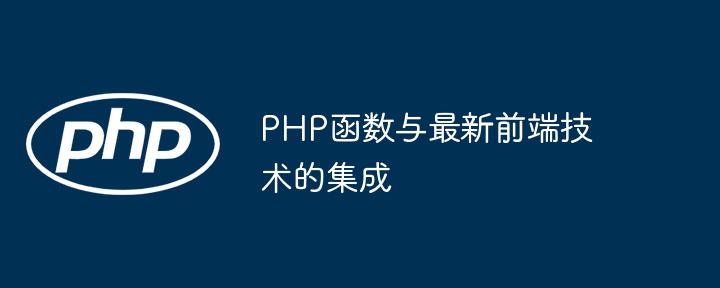
PHP functions can be integrated into front-end technology to enhance front-end functionality, including: Ajax requests: Send requests to the PHP backend, process operations and return data. WebSocket: Establish a real-time connection and continuously send data to the front end. Server-side rendering (SSR): Server-side rendering of PHP code to improve loading performance and SEO.

Integration of PHP functions with the latest front-end technology
Introduction
PHP is A server-side language widely used for back-end development. As front-end technology evolves, integrating PHP functions into modern front-end applications is becoming more and more common. This enables developers to leverage the power of PHP to enhance front-end functionality.
Methods
There are several ways to integrate PHP functions into front-end technologies:
Practical case
Using Ajax to integrate PHP functions
// index.php
<?php
if (isset($_POST['name'])) {
$name = $_POST['name'];
echo "Hello, $name!";
}
?>// main.js
$(document).ready(function() {
$('#submit-button').click(function() {
var name = $('#name').val();
$.ajax({
type: 'POST',
url: 'index.php',
data: { name: name },
success: function(response) {
alert(response);
}
});
});
});In this example, when the user clicks When the "Submit" button is pressed, an Ajax request sends the name value to index.php. The PHP script handles the request and returns a greeting, which will be displayed in the alert dialog box.
Integrating PHP functions using WebSocket
// server.php
<?php
$server = new WebSocketServer("127.0.0.1", "8080");
$server->run();
?>// client.js
const socket = new WebSocket("ws://127.0.0.1:8080");
socket.onopen = function() {
console.log("Connected to server");
};
socket.onmessage = function(event) {
console.log("Message from server: ", event.data);
};
socket.onsend = function(event) {
console.log("Message sent to server: ", event.data);
};In this example, the WebSocket server has been established in server.php. The client uses client.js to connect to the server and can send and receive messages between the front and back ends.
The above is the detailed content of Integration of PHP functions with the latest front-end technologies. For more information, please follow other related articles on the PHP Chinese website!